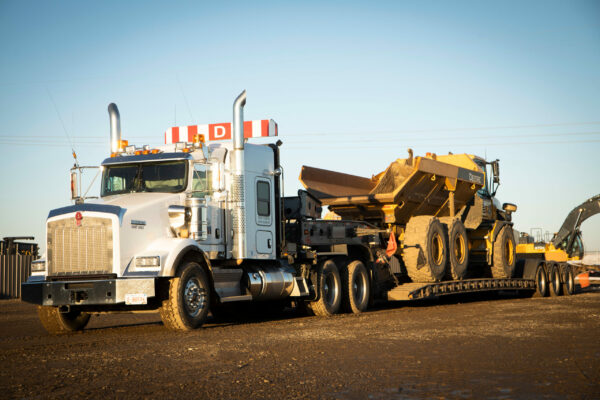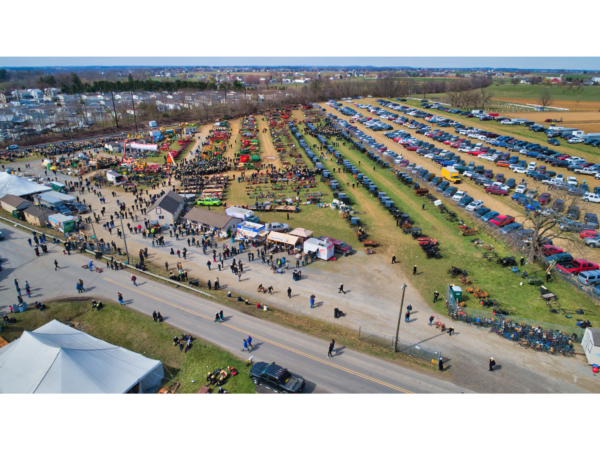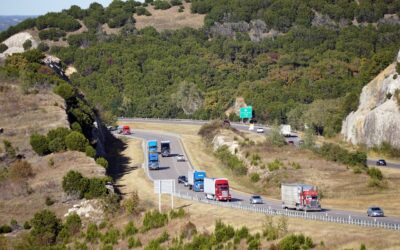What Is Considered an Oversized Load in Ontario and Eastern Canada?
Key Points In This Article:
- What makes a load oversized?
- The road restrictions for oversize loads:
- Protect road infrastructure
- Ensure public safety
- Maintain convenience on public roadways
- Regulate safety measures for truck drivers
- Rules and Regulations in Eastern Canada
- Ontario
- Quebec
- Nova Scotia
- New Brunswick
- Prince Edward Island
- Newfoundland
- Are there exemptions for hauling farm equipment?
At its widest point, Canada is nearly 7,560km from East Coast to West Coast. That’s 4,700 miles if you measure your distance in miles and six different time zones. It’s an extensive territory covering landscapes that vary from rugged rockscapes of the Canadian Shield to flat open prairies to mountain passes filled with hair-raising switchback turns. It’s no wonder this country is home to some incredibly skilled truck drivers.
With many large industries utilizing heavy equipment and machinery, there is no shortage of need for professional heavy haul drivers. Whether it’s transporting construction equipment from site to site or delivering farm equipment purchased at auction, there is an ever-growing demand for skilled drivers. While industry and commercial companies have their own transport systems, Trusted Dispatch serves individuals and companies that need equipment shipped on a smaller scale.
With drivers located across North America, we’ve seen shipments traverse the country and over the border with a multitude of different heavy hauls and oversize loads. In a previous blog post, we covered the rule and regulations of oversize loads in Western Canada. In this article, we’re diving into the laws and regulations regarding oversize loads on the other side of the country: Eastern Canada.
What Is An Oversized Load?
An oversized load is then a shipment that goes over the set dimension restrictions. When a load reaches oversize measurements, a special permit to travel is required. There will also be other requirements, such as special signs, lights, and escort cards, depending on the region.
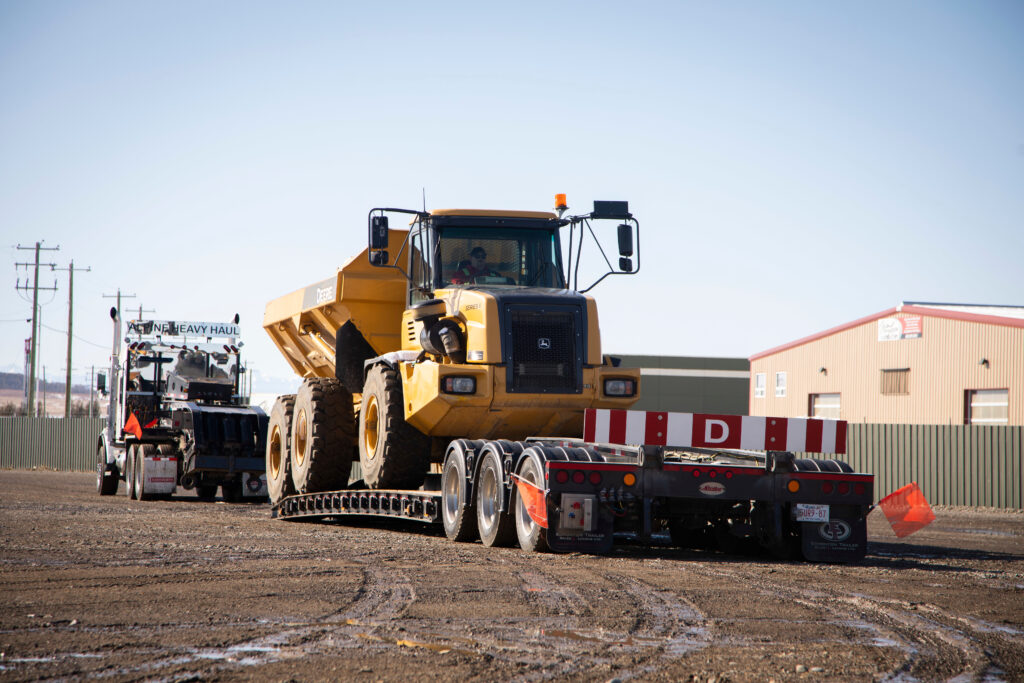
Why Are There Rules for Oversize Loads?
Canadian roads are built to accommodate a specific range of dimensions for vehicles. There are restrictions on the width, length, height, and weight of vehicles. These rules are not arbitrary; they are created to protect the infrastructure to ensure our roadways last as long as possible, and to protect public safety.
Certain highways will have height restrictions to protect overhanging electrical wires, overhead passes, bridges, and tunnels. Width restrictions are based on how many lanes are available and the volume of traffic. The rules for major highways such as the 401 in Ontario will be different from secondary routes that connect farmland.
Are Oversized Load Regulations the Same Across Canada?
Due to the varying terrain and population density of Canada, the rules and regulations of oversized loads change depending on the province or territory. There are similar requirements used across zones, including oversize signage, lighting, and escort cars to warn both oncoming and following traffic. However, the exact limitations on size and weight dimensions do vary. The primary reason for the differences is the terrain and traffic. Driving through the Rocky Mountains, compared to the crowded highways of Ontario and Quebec, require different limitations.
Common Requirements for Oversize Loads in Canada
Oversize Load Signage
When a load is oversized, the most basic requirement is to display some signage to indicate to the surrounding traffic that a truck is hauling something that is larger than usual. This signage is typically displayed at the front of the truck or the rear of the trailer, or both places. Additional rules may require the truck and trailer to have red or orange flags and flashing lights, especially for use at night.
Oversized loads that are extra wide will require flags and lights to be connected at the widest points to alert surrounding traffic of the hazard. Loads that are over a certain height may require the use of an escort car with a pole attached to the front that matches the height of the haul. This type of vehicle is called a pole car.
What Does a Pole Car or Height Pole Car Do?
When transporting shipments that are overly tall, a specific escort vehicle known as a height pole car or simply pole car is often required. This particular escort vehicle travels in front of the load and has a pole attached to the front of it that measures the exact height of the shipment. This vehicle will know if there are any obstacles ahead that the load will not fit underneath.
In Canada, there are rules and regulations regarding the height of vehicles on roads and highways to ensure all traffic fits under overpasses, electrical wires, and through tunnels. Specific transport routes are designated to allow for the typical oversize load to travel without causing problems or getting stuck. Although drivers follow the provincial and regional guidelines for hauling oversize loads, the pole car serves as a warning for unpredictable hazards, such as leaning tree branches, temporary signage, and other potential low-hanging problems that are not on the map.
Exemptions for Farm Equipment
In the prairie provinces of Canada (Alberta, Saskatchewan, and Manitoba), there are exemptions for farm equipment travelling and getting hauled on the roadways. In most cases, oversize width permits and escort vehicles are not required. However, height restrictions and weight limits do apply.
These exemptions are not the same across the country. In Ontario, farm equipment that travels on the roads does not require a permit, but trucks hauling farm equipment do. This applies to the standard, oversize dimensions as described in detail in the following sections below.
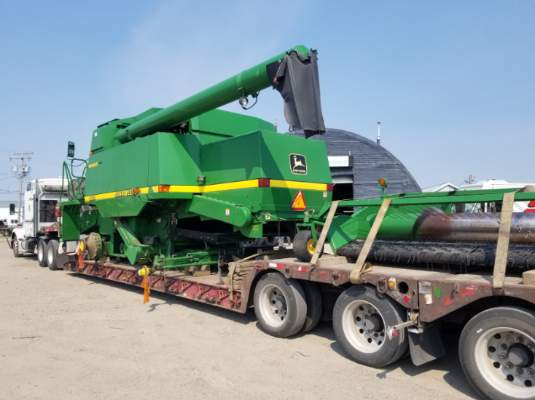
What Are the Rules for Oversize Heavy Haul Loads in Ontario
Ontario is a vast province consisting of expanses of tundra in the north, forest and rockscapes in the west, and a mix of farmland and urban sprawl in the south and east. Hauling oversized loads across this province involves careful planning to stick to approved trucking routes and abide by the rules and regulations set by the provincial government and municipalities.
There are different dimensions that indicate an oversized load, depending on the type of vehicle. For example, a pick-up truck will have a size restriction that is smaller than a semi-truck. The following dimensions are for semi-trucks with trailers.
The overall dimension restrictions for oversized loads in Ontario have some similarities to Western Canada. However, there are additional specifications to comply with new regulations aimed at protecting roadway infrastructure. The Safe, Productive Infrastructure-Friendly (SPIF) regulations require stricter weight restrictions for loads. SPIF-compliant trucks and trailers have more significant length limitations compared to NON-SPIF vehicles.
Overall height: 4.15m or 13′ 6″
Overall length: 16.15m (53′) SPIF or 14.65m (48′) NON-SPIF
Overall width: 2.6m or 8′ 6″
Escort Vehicles
There are some oversized loads that do not require an escort vehicle. Those restrictions are as follows:
Widths between 2.61m (8.5ft) to 3.99m (13ft)
Lengths between 23.01m (75.7ft) to 36.75m (120.5ft)
Heights between 4.16m (13.7ft) to 4.86m (16ft)
A private escort warning vehicle is required for:
Widths between 4m (13ft) to 4.99m (16.4ft) – 1 escort required on multi-lane highways
Widths between 4m (13ft) to 4.59m (15.1ft) – 1 escort required on two-lane highways
Widths between 4m (13ft) to 4.99m (16.4ft) – 2 escort vehicles required on two-lane highways
Escort cars need to precede an oversized load on two-lane highways to alert oncoming traffic and follow the load on multi-lane highways to alert traffic travelling in the same direction as the oversized load.
Oversized shipments that reach over 4.87m (16ft) in height require a pole car to travel ahead of the load.
Night Moves
Night moves are allowed for loads that are less than 3.05m wide and 25m long as long as they are moving on multi-lane highways with a median.
For overly tall shipments that are under the width restriction, night transport is permitted on all King’s highways in Ontario, as long as the height is under 4.26m and not overweight.
When inclement weather happens that decreases visibility and safe travel, there are also more restrictions on night transport. The Ontario government has full details on what qualifies as inclement weather on their website.
Statutory Holiday Moves
For statutory holidays, oversized loads have some restrictions on being on the road. When the shipment is less than 3.7m wide, shorter than 25 m, and less than 4.26m high, it can be on the road between half an hour before sunrise and noon on the day before the statutory holiday. No oversized shipments are allowed on the highways on Statutory holidays to reduce congestion with regular traffic.
There are more detailed rules and regulations for heavy hauling of oversized shipments through Ontario that may have an impact on the timing of your shipment. Your driver will be informed of any limitations and can advise you on potential delays if applicable.

What Are the Rules for Oversize Heavy Haul Loads in Quebec
The road rules of Quebec have similarities to Ontario due to the volume of traffic that moves along the main transportation arteries across the region. While there are similarities, there are also distinct differences, as so often are between provinces. In Quebec, the limitations on load length and when escort vehicles are required are slightly different and highlighted below.
Overall height: 4.15m or 13′ 6″
Overall length: 23m or 75′
Overall width: 2.6m or 8′ 6″
Escort Vehicles
A front escort or pilot vehicle is required to travel with an oversized load that measures more than 3.75m wide (multi-lane road) and 17m long.
A rear escort or pilot vehicle is required when a load is more than 3.75m wide and is travelling on the road with one late of traffic in the direction travelled by truck. Other scenarios where a rear escort is necessary to include:
- When the load is between 3.1m and 3.75m and is travelling at night
- When the load is taller than 4.5 m
There are more detailed regulations for specific circumstances when escort vehicles are needed. Your professional driver will ensure your shipment abides by all the rules when transporting through Quebec.
Night Moves
Flag, lights, and banners that indicate an oversized load are required on the truck and trailer during daylight hours (half an hour before sunrise until after sunset). Night transport of oversized loads requires a permit.
What Are the Rules for Oversize Heavy Haul Loads in the Maritimes
The Maritime Provinces boast spectacular driving routes and incredible ocean views, making driving through the region an enjoyable experience in terms of the views. That spectacular terrain also presents unique challenges for truckers hauling shipments through the areas. The Atlantic region is known for wild weather at times, and the rules and regulations regarding oversized shipment transport reflect the natural conditions. The most common similarity between the provinces is in the emphasized restriction on travel during adverse weather and road conditions.
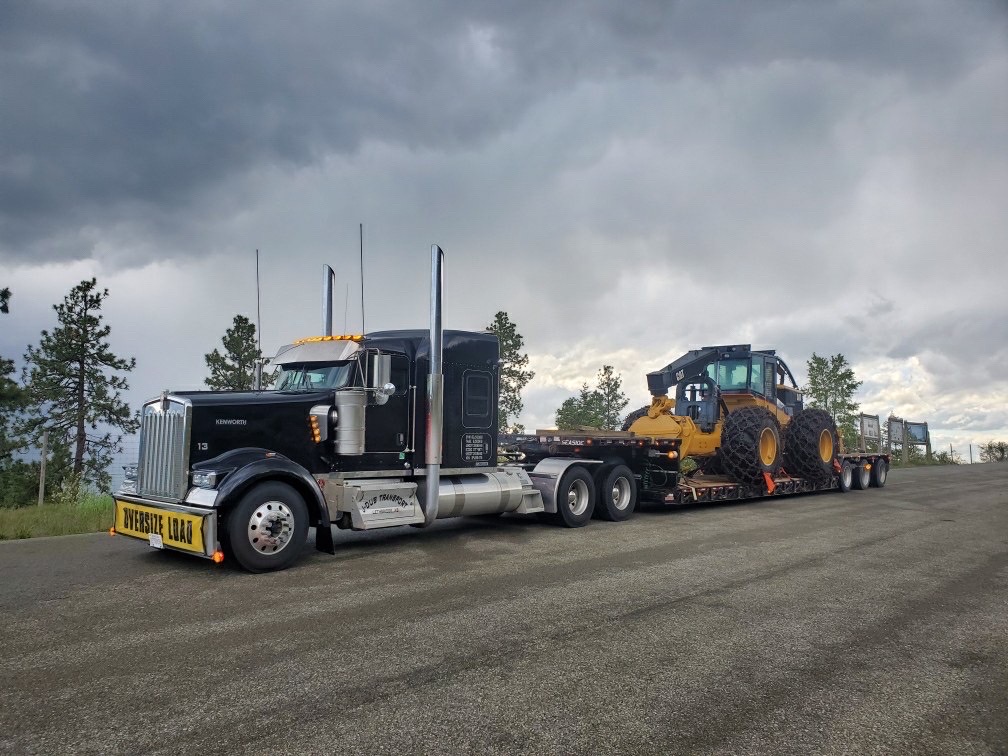
New Brunswick
New Brunswick has clear guidelines for when a permit is needed on oversized shipments. Any shipment that exceeds the maximum limit will then require designated signage and lighting, as well as various restrictions for travel based on measurements and the use of escort vehicles.
Overall height: 4.27m or 14′
Overall length: 30m or 98′
Overall width: 3.65m or 12′
Escort Vehicles and Other Regulations
Oversized vehicles are required to display the oversized signage on the front and back of the load, as well as flashing or rotating amber lights. Escort vehicle usage depends on the dimensions of the shipment and the routes travelled. Full details of New Brunswick rules can be found here.
Nova Scotia
In Nova Scotia, permits are required for all oversized loads. The rules and regulations are set by the Department of Transportation and Infrastructure Renewal (TIR) to protect roads and bridges, public safety, and manage traffic flows in rural and urban areas. The following are the basic measurements that mark an oversized load and trigger a mandatory permit requirement.
Overall height: 4.15m or 13′ 6″
Overall length: 23m or 75′ 5″
Overall width: 2.6m or 8′ 6″
Vehicles on the road that measure more than 4.88m high, 30m long, and 5.49m high require special review and permit approval by the TIR.
Escort Vehicles and Other Regulations
Oversized vehicles require permits to be on the road but are not permitted to travel during inclement weather or adverse road conditions. Escort vehicles are needed at the front and back of the oversize load, and revolving or flashing amber lights are mandatory on the escort vehicles and trucks to alert surrounding traffic of the oversized haul.
Prince Edward Island
While the following measurements and rules apply to the roadways on Prince Edward Island, shipments must also abide by the rules for crossing the Confederation bridge onto the island. Commercial shipments must check in with authorities upon arrival at the bridge area. Depending on how oversized the width of the shipment is, the driver may need a Bridge Patrol car to escort it across or even a partial lane closure while crossing. Full bridge guidelines can be found here.
Overall height: 4.15m or 13′ 6″
Overall length: 16m or 53′
Overall width: 2.6m or 8′ 6″
Escort Vehicles and Other Regulations
Once a haul reaches over 3.66m or 12′ in width, an escort vehicle is required to accompany it. A single pilot car is required on two-lane highways, and both a pilot and trail escort vehicle is required on multi-lane highways. Further regulations apply to loads that reach the next width limit.
Newfoundland
The province of Newfoundland has its own variation on oversized rules and regulations.
Overall height: 4.88m or 16′
Overall length: 35m or 114′ 8″
Overall width: 4.88m or 16′
Escort Vehicles and Other Regulations
The exact requirements for escort vehicles are on a review basis. However, oversized load signage and flashing lights are required on the truck and escort vehicles to alert surrounding traffic.
Restricted Travel Times
Oversized loads are not permitted to travel after 3 pm on Fridays or after noon on Saturdays and Sundays. For statutory holidays there is no travel permitted after 3 pm on a preceding day, and travel is only allowed from sunrise to noon on the day of the holiday.
Oversized Shipping in Eastern Canada
The bottom line is that Canada is a large country, and the rules regarding oversize shipping have slight variations from province to province. When you need a long-haul shipment across this beautiful country, you can have confidence booking your haul with Trusted Dispatch. Our network of drivers has years of experience driving in all areas of North America. The driver that takes your shipment will know the process to obtain all relevant permits and abide by the rules and regulations in each jurisdiction. Get started moving your equipment with a free, instant quote using our shipping calculator.

